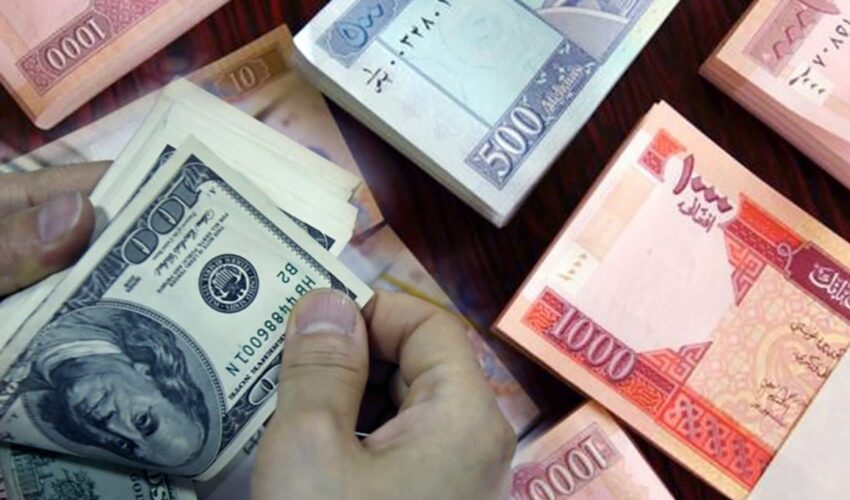Terrorist Group’s Sources of Funding

How Much Does the Taliban Make From the Opium Economy in Afghanistan?
By: Hamid Azizi
Terrorist organizations, like any other organization, require money to operate. Depending on the geographical location, ideological foundation, nature of operations, and size, terrorist organizations have different funding sources at their disposal, including state funding, organized crime, and charitable donations from wealthy individuals and institutions that sympathize with a terrorist organization’s ideology. Michael Freeman classified terrorist organizations’ income sources into the following four categories: 1) state sponsorship, 2) revenue derived from licit activities and businesses, 3) income from organized crime and illegal activities, and 4) donations from individuals and institutions supporting a terrorist cause for political, economic, or religious interests.
There are advantages and disadvantages for a terrorist organization to select one or a combination of the funding sources mentioned above. The criteria through which terrorist organizations decide what funding source to select differs from one group to another. While the more funding, the better, terrorist organizations must consider how a funding source may affect their legitimacy and cause. When selecting a funding source, terrorist organizations also consider the degree of control the funding source may impose on them. For example, funding provided by a state may come with specific control imposed by the state on how a terrorist organization should behave and operate.
Terrorism- organized crime nexus
The association between terrorism and organized crime is not a new phenomenon. Interaction between terrorist and criminal organizations could be based on need and mutual gains such as money, protection, weapons, laundering money, and other services each organization provides to the other. Drugs and weapons are of interest to terrorist organizations and organized crime groups. As a result, there is an area of collaboration between the two organizations. Despite the similarities and areas of cooperation between terrorist and organized crime groups, there are also dissimilarities and competitions over resources between the two organizations. For example, in 1987, disputes between Upper Huallaga Valley and Sendero Luminoso groups in Peru led to armed clashes, or competition between FARC and drug cartels over land in Colombia led to several deadly conflicts.
Terrorist organizations and organized crime groups also have differences in their objectives and motivations. Terrorism is a type of political violence that aims to achieve political objectives, while organized crime’s primary objective and motivational factors are economic gain.
The extent of using organized crime as a funding source varies based on a terrorist group’s geographical operation, organizational capacity, financial sources, and ideology. For example, the Taliban in Afghanistan and FARC in Colombia have used organized crime, particularly drug trade, as a significant source of finance due to the geographical circumstances and reliability of financial resources associated with opium and coca production in each country.
Nevertheless, the traditional separation of terrorism and narcotics policy faded away as early as 9/11. More cooperation between law enforcement agencies and intelligence has been emphasized at the national and international levels. By adopting resolution 1373 of the UN Security Council, the United Nations has advocated for policy cooperation to tackle terrorism and organized crime, including drug trafficking organizations, due to the increasing collaboration between the two groups.
The Taliban’s sources of funding
Understanding and estimating a terrorist organization’s sources of income is challenging, given that such data is not publicly available. Available research suggests that the Taliban have a diverse funding source and a complex financial system; hence, collecting reliable data to accurately estimate the group’s financial revenue is challenging, if possible. Similarly, the Taliban’s funding sources are diverse. For this article and using Freeman’s framework, they are classified into four following categories: state sponsorship, illegal activities including illicit drug production and trafficking, collecting protection money, and illegal exploitation of the mining industry, legal businesses and activities, donations provided by individuals and charitable organizations supporting the Taliban’s cause.
This article discusses only the Taliban’s revenue from illicit drug production and trafficking in Afghanistan in the last two decades. In the future issues of Afghanistan House, other funding sources of the Taliban will be examined in more detail.
The Taliban’s income from the illicit drug trade in Afghanistan, 1994-2021
Revenue collection from illicit drug trade has been a primary source of the Taliban income since the group emerged in 1994. The Taliban have been involved in various stages of the drug trade, including but not limited to the imposition of tax on opium poppy cultivation and drug trafficking, provision of protection to opium poppy cultivation and drug trafficking, provision of protection to heroin processing labs, directly involved in drug trafficking including direct involvement of a number of their top leadership, involvement in precursor trafficking, received in-kind support from drug traffickers, and enjoyed a close relationship with the drug trafficking networks in Afghanistan. Additionally, major drug traffickers also provided medical treatment facilities for the injured Taliban fighters and built madrassas in Pakistan to train new recruits. Several well-known Afghan drug lords, such as Haji Juma Khan from Southern Kandahar province (the birthplace of the Taliban group) and Haji Bashar (also spelled as Bashir) Noorzai From the same province, reportedly provided significant financing resources to the Taliban during the early years of the movement. They also acted as senior advisers to the Taliban leader Mullah Mohammad Omar and enjoyed influence within the movement.
The United Nations Office on Drugs and Crime (UNODC) and the United Nations Security Council (UNSC) Sanctions Monitoring Teams (UNSMT) have estimated the Taliban’s annual revenue from the illicit drug trade between US$ 90 to US$400 million in the last two decades. Other estimates made by the US Department of States, United States Forces in Afghanistan (UNFOR-A), Central Intelligence Agency (CIA), United States Institute for Peace (USIP) and independent experts, and most recently, David Mansfield range from annually US$19 to nearly US$500 million. The Table below shows the available estimates of Talban’s revenue from the opium economy from 1994 to 2021.
Table 1: Estimates of the Taliban annual revenue (in US$) from opiate trade in Afghanistan, 1995-2021
Source: systematic literature review conducted by the author
Revenue from other drugs
Methamphetamine production
In addition to opium, the Taliban have also collected revenue from other illicit drugs, namely methamphetamine production and trafficking and cannabis cultivation and production. Methamphetamine production has increased in Afghanistan in the last few years. According to an expert, methamphetamine production labs in Afghanistan have benefited from training by Iranian producers. Several methamphetamine labs have moved from Iran to the western provinces of Afghanistan in Farah, Herat, and Nimroz. UNODC reported that methamphetamine seizures had increased in Afghanistan from a kilo in 2012 to over a ton in 2020. Seizures of methamphetamine have been reported in several provinces of Afghanistan that the Taliban have partly controlled in the last few years. Recent research estimated that the Taliban’s revenue from methamphetamine production is between US$ 7 to US$ 10 million annually,..
before the regime change in August 2021. However, the Taliban continue to collect revenue from methamphetamine production today.
Cannabis cultivation and trafficking
Cannabis cultivation has a long history in Afghanistan, and the hashish produced in Afghanistan is famous for its high quality globally. There is a limited written record of cannabis cultivation in Afghanistan, but it is assumed that during the Mughal dynasty (1526-1857), the cultivation of cannabis was encouraged by the rulers.
The most up-to-date information on cannabis cultivation in Afghanistan is from a UNODC survey conducted in 2012. Based on this survey, it was estimated that 10,000 hectares of cannabis were grown in Afghanistan, and reportedly 1,400 tons of cannabis resin were produced in the same year with a potential gross income of US$ 6,400 per hectare(12). UNODC research indicts that the price of cannabis resin has increased in Afghanistan, and income from cannabis resin could potentially be US$ 7,400 per hectare as compared to opium, which amounted to US$ 2,200 per hectare in 2021.
An earlier UNODC cannabis survey in 2009 suggested that cannabis was cultivated in 17 out of the 34 provinces of Afghanistan. However, most of the cultivation occurred in the Southern region, where most opium poppy cultivation has also been taking place. In the same study, around 70 percent of the farmers interviewed reported that they had paid 10 percent of Ushr to various non-state actors, including the Taliban and local Mullah/clergy, and the remaining 30 percent of farmers interviewed said they did not pay Ushr. Recently, David Mansfield estimated the Taliban’s annual income from cannabis cultivation and production to be between US$5 to US$8 million in 2020.
The Taliban’s relationship with the illicit drug trade has been rather complex and equally poorly understood in the last two decades due to limited empirical research and the complicated and challenging nature of the phenomenon.
The nearly two decades of counter-narcotics intervention in Afghanistan proved ineffective despite multi-billion-dollar investment and technical assistance of multiple donors, chiefly the United States. Recent assessments of the two decades of drug policy in Afghanistan showed that the Taliban- drug trade nexus had been poorly understood. This partly contributed to a counter-narcotics policy failure in Afghanistan.
Opium poppy cultivation and opiate production have continued to increase in Afghanistan, with the opiate produced in the country supplying over 80 percent of the global demand. The Taliban have played a key role in the sustainability of this supply source in the last two decades and continue to benefit from the opiate economy as the de facto authority, particularly as the country is struggling with an economic crisis. The recent (2022) UNODC survey findings indicate an increase of over 30 percent in opium cultivation since the Taliban took over Afghanistan in August 2021.
With the Taliban regime’s national and international legitimacy crisis, the internal dispute between the different factions of the group, the absence of neutral bodies to monitor opium cultivation and production, and the Taliban-drug trade linkages, there is a knowledge gap that contributes to a lack of understanding of the situation on the ground. Opiate produced in Afghanistan poses a global economic, security, and health threat. At the same time, hundreds of thousands of poor farmers’ livelihoods depend on the opiate economy inside Afghanistan.
Shortly after taking over Afghanistan, the Taliban announced banning opium poppy cultivation, opiate production, and trafficking. However, there is no mechanism to monitor if the Taliban can impose a ban and, if so, how they enforce it.

Barakat Rahmati

Nazeela Elmi

Ahmad H. Najmpoor





